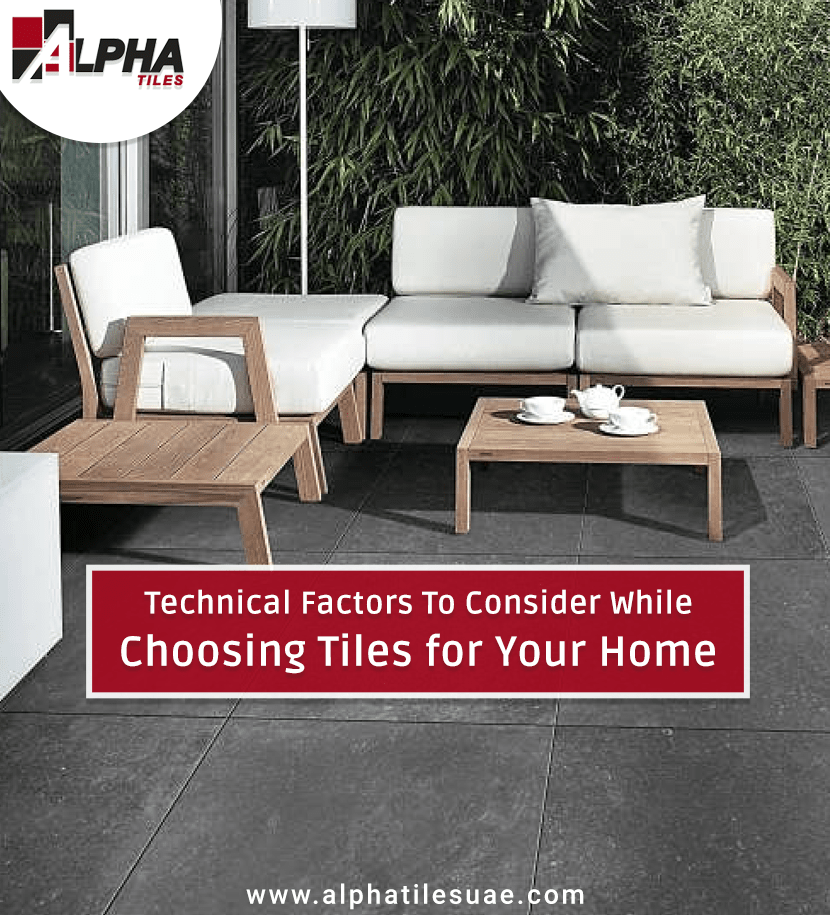Tiles define the aura and feel of your home. When building or remodeling a home, it is important to invest in the right tiles as it could dramatically affect the value of your home. With a wide range of tiles available with a variety of novel specs, choosing correct tiles could be a daunting task. Tile supplier in UAE suggest that you should consider the below mentioned technical contemplations without fail while choosing tiles for your home.
1.Check the hardness
Tile hardness is one of the most important factors to consider while choosing tiles for your home, especially outdoor tiles. Hardness measure the ability of tiles to withstand wear and tear, scratches, spills, and foot traffic.
Hardness is typically measured on the Moh’s scale.
| Hardness Rating | Specs |
| Class I | Suitable only as wall tiles. |
| Class II | Ideal for walls. Good for rooms and spaces with very light traffic. Suited for soft-soled applications like the bathrooms, bedrooms, etc |
| Class III | Can withstand moderate foot traffic. Best suited for countertops, walls, and spaces with less to normal for traffic and less exposure to scratches. Works well for bedrooms. Not ideal for entryways, kitchens, and corridors |
| Class IV | Works well for areas with moderate foot traffic. Suited for almost all the areas of a home. A great choice that provides function and beauty. |
| Class V | Can withstand heavy foot traffic. Works well for homes as well as for commercial spaces like malls. Great for outdoor tiles. |
2.Consider Tile Porosity
Tile porosity determines the amount of moisture that a tile absorbs. Choose tiles with low porosity for moisture-prone areas like bathroom, kitchen, laundry, etc. If you fail to pay attention to the porosity factor, you may end up throwing your investment in tiles to waste.
For instance, you might end up using high porosity tiles as kitchen tiles and you will have to replace the tiles much sooner relatively as it will be damaged in a short period from absorbing the moisture.
| Porosity Rating | Specs |
| Impervious | Water absorption rate is less than 0.5%. Ideal for humid spaces like kitchen and bathroom. |
| Vitreous | Water absorption rate – 0.5% to 3%. Can be used as floor tiles. |
| Semi-vitreous | Water absorption rate – 3% to 7% |
| Non-vitreous | Water absorption rate – 7%. Can only be used for walls in spaces that are not moisture-prone. |
3.Slip Resistance
Typically, all tiles are slippery to a certain extent, especially when there is water spilled on the floor. If you have elders and children at home, choose tiles with a high Co-efficient of Friction (CoF). Especially for bathroom tiles, you need to keep the slip resistance factor in mind while making the choice.
4.Opt for porcelain or ceramic wood look tiles instead of real wood tiles
If you are an aficionado of wood texture for your floors, we suggest you go with porcelain or ceramic wood design tiles instead of choosing real hardwood floors. Hardwood floors are difficult to maintain and cannot be highly exposed to moisture. Ceramic/Porcelain wood design tiles are durable, moisture-resistant, scratch-resistant, and also provides the desired natural wood like finish.

